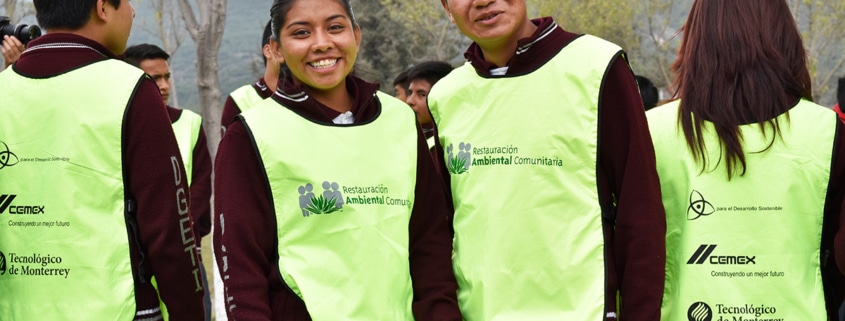Dueling COPs and the Ministry of Nature: The Question of Jurisdiction over Biodiversity
An interesting thread unrolled on Twitter on the last day of COP15, the biodiversity-oriented conference of the parties held in Kunming, China from October 11-15. COP15 was, according to the New York Times, “The Most Important Global Meeting You’ve Probably Never Heard Of.” The lack of fanfare surrounding this year’s UN Biodiversity Conference is nothing new — the conference, held every two years, typically remains in the shadow of the other, climate-focused COP, which is held annually and in its 26th iteration.
The Twitter thread started when, comparing the public’s approach to biodiversity loss to that of climate change, post-doc researcher in equity in nature-based solutions, Stephen Woroniecki (@StephenWoroniec) asked, “I wonder why it’s so difficult to imagine the existential threat of biodiversity loss. Any thoughts?” This question led to an interesting discussion on humanity’s relationship to nature. Responses ranged from the fact that we’ve lived apart from nature for so long that we don’t recognize its centrality to our lives, to the fact that while we understand that the climate crisis is not contained by a single nation, the biodiversity crisis is seen as a sovereign matter, rooted in specific places with very specific jurisdictions responsible for it.
Envisioning a Ministry of Nature
This final point on jurisdiction, made by Dr. Michelle Lim (@FutureEnvLaw), a global assessment fellow for IPBES, can be expounded upon by acknowledging that this concept of jurisdiction, the extent of the authority over nature and its protection and recovery, is generally buried deeply within the structure of national governments. When we look at how biodiversity is governed, and how the policies and regulations around it are designed, it is clear that nature is considered a thing apart instead of an intrinsic component of life.
Governments in the U.S., Europe and elsewhere have various departments for nature, but these departments (or bureaus or agencies) are generally housed in larger government divisions. There is never a Minister of Nature nor a seat at the cabinet table for biodiversity. In some cases, nature is split across government departments — in the U.S., for example, the Department of Agriculture oversees soils and forests, whereas fish and wildlife fall under the Department of the Interior. Those two departments loosely share responsibility of plants, and the Environmental Protection Agency handles air and water.
There is a direct line from jurisdictional weaknesses to the ongoing destruction of nature both done and enabled by governments. Tony Juniper, Chair of Natural England (itself sponsored by the Department for Environment, Food & Rural Affairs), spoke at a Commons Select Committee on Biodiversity in 2020. He pointed out that the majority of the success stories associated with biodiversity (e.g., species recovery, ecological restoration) are overseen by nature-oriented agencies and departments, while the negative impacts are addressed by other government entities, like departments of transportation and economic development. Imagine the difference if a department of nature had as much standing as transportation or treasury, or if every government department was mandated and funded to staff an office of biodiversity. If the functions of finance can run through every government department, so should nature.
The Case for Uniting the COPs
Another jurisdictional issue rests in the case of the dueling COPs. On one side we have COP26 with world leaders, celebrities, businesses and NGOs dusting off their suitcases to travel to Glasgow with exhortations from leading media outlets ringing in their ears, white papers on climate mitigation and resilience weighing down their briefcases and a sense of importance attending their every tweet. On the other side we had COP15 — internet searches for this conference returned mainly Chinese news outlet articles. Celebrities and high-level politicians were far and few between. During the week of COP15, the leading biodiversity groups in the U.S. remained markedly silent about the event. Between October 11-15, the Audubon Society tweeted about climate change seven times and the biodiversity crisis once in a post about Indigenous Peoples’ Day. COP15 was not mentioned all week. The National Wildlife Federation mentioned climate change twice in the same period without a single mention of COP15. A gambling person would have no problem betting that these same groups will be loudly engaged with COP26.
The uneven attention given to COP26 has exacerbated a sense of competition between the equally existential, and closely intertwined, crises of climate and nature. Merging the two COPs would ensure that the declarations, commitments and decisions surrounding these challenges are integrated, and that efforts to address each issue positively reinforce each other rather than cause competition for attention, resources and, most importantly, government follow-through. In restructuring the COPs, the UN should draw inspiration from The Earthshot Prize, a global funding program that “recognises the interconnectivity between environmental challenges and the urgent need to tackle them together.”
A New Vision for Nature
We also need this merger because COP15 was built on the back of a failure of epic proportions. Of the 20 time-bound and measurable targets for 2020, adopted in 2010 with great enthusiasm at COP10 in Japan, not one has been met. Since then, the world has gone into a nature deficit exceeding its planetary boundaries for biosphere integrity. Governments failed to act and nature suffered. The Kunming Declaration, the joint statement agreed to by the delegates to COP15 declares that putting biodiversity on a path to recovery is a defining challenge of this decade and sets out a number of commitments in support of the development of a post-2020 agenda including: mainstreaming nature into decision making (maybe my Minister of Nature idea is not that farfetched), strengthening environmental laws, addressing nature-destroying subsidies and incentives, and enhancing collaboration with the UN Framework Convention on Climate Change.
At the bottom of all these words and declarations lies one simple truth: we need to stop the destruction of nature. We know what the drivers of destruction are. We know where the decision points lie, and we know how to fix and restore nature once its destruction has been halted. But it’s only in the jurisdictions that these things can happen. It’s in the departments of transportation and economic development that incentives and subsidies can be addressed, in the departments of finance and treasury that the funding of $950 billion per year be allocated and in the environmental agencies that pollution in all its forms can be reduced and eliminated. We need to address these issues while making way for freestanding ministries of nature to step in to weave the frayed threads of our ecosystems back together, then deploy an army of ecologists to build back the color and vibrancy of our natural world.

